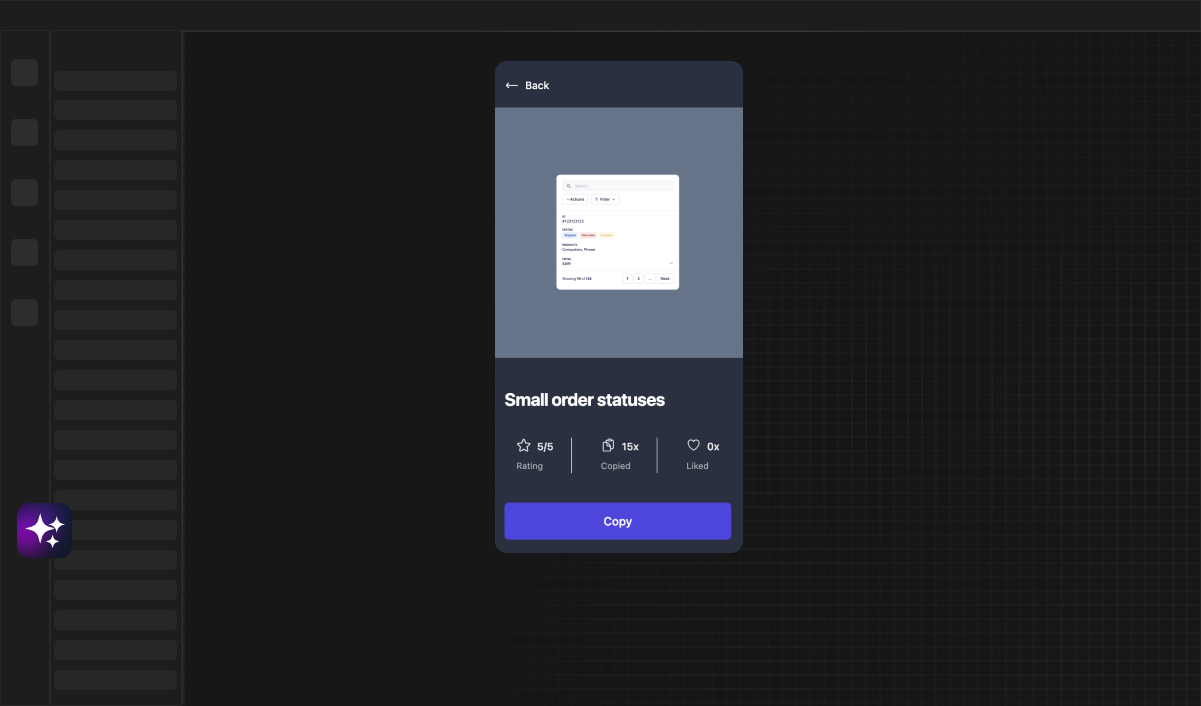
Web Developer
Setting Up Domain and Email in Bubble: A How-To Guide
Learn how to set up a custom domain and email for your Bubble app with our comprehensive guide. Essential tips for choosing, purchasing, and integrating your domain and email to enhance your app's professionalism and reliability.
Understanding Bubble: An Introduction to Domain and Email Setup
Defining Bubble for New Users: A Platform Overview
Starting your own online platform can be a thrilling adventure, and Bubble.io makes this journey accessible for creators of all skill levels. Bubble is a potent tool that enables you to design and deploy web applications without needing to write traditional code. One of the many features it offers is the ability to set up a custom domain and email, which are essential components for establishing a professional presence online.
Before diving into the specifics, let's first understand what these terms mean. The domain is the web address people use to find your app on the internet, such as "www.yourapp.com," while your email setup is crucial for communication and building trust with users. Both elements play a significant role in branding and credibility.
Domain Fundamentals: What You Need to Know
A custom domain differentiates your Bubble app from others and gives it a distinctive identity. It's more than just an address; it's a representation of your brand and a key factor in how users perceive your online presence. A proper domain setup also affects your app's search engine visibility.
Email setup, on the other hand, involves creating a professional email address linked to your domain, for example, "info@yourapp.com." This not only looks more professional than using a generic email service but also ensures consistency in your branding efforts. Now, let's explore how to select the ideal domain name and set up your email services on Bubble.
Choosing Your Domain Name: A Step-by-Step Process
Brainstorming the Perfect Domain Name for Your Bubble Application
Choosing the right domain name for your Bubble app is much like naming a baby - it requires thought, consideration, and a peek into the future. Aim for a domain name that is easy to remember, short, and reflective of your brand's ethos. Get creative but stay relevant, and make sure your name is flexible enough to grow with your business.
Begin by brainstorming a list of potential domain names. Use tools like domain name generators if you need inspiration. Be mindful of domain name trends, but remember, the timeless choice often triumphs over the trendy one.
Key Tips for Domain Name Selection: SEO and Branding
When it comes to selecting the right domain name, it's crucial to consider both search engine optimization (SEO) and branding. Keywords in a domain can boost SEO, making it easier for people to discover your app. However, don't sacrifice brand uniqueness for SEO - strike a balance.
Additionally, check the availability of your chosen name across various domain registrars and social media platforms to ensure uniformity in your online presence. Avoid names that are too similar to existing brands to steer clear of confusion and potential legal issues.
Purchasing and Configuring Your Domain
Where to Buy Your Domain: Top Domain Registrars
Once you've settled on the perfect domain name, the next step is to purchase it from a domain registrar. Companies like GoDaddy, Namecheap, and Google Domains are popular choices offering a range of options and prices. Compare their features, such as privacy protection and domain management tools, to find the best fit for your needs.
Some registrars may offer package deals that include hosting services, but with Bubble, you only need to worry about the domain itself. Check for any promotions or discounts before finalizing your purchase to save a bit of money.
Linking Your Domain to Bubble: Technical Setup Guide
After acquiring your domain, it's time to connect it to your Bubble app. This can seem daunting, but Bubble simplifies the process. You'll need to access your domain's DNS settings and add specific records provided by Bubble. These records are essential to point your domain to your Bubble application.
Bubble's documentation provides detailed instructions for this process. Follow the steps carefully, and don't hesitate to reach out to their support team or community forums if you encounter any hurdles. Once configured, it can take a few hours to a couple of days for the changes to propagate across the internet.
Setting Up Custom Email on Bubble
Email Hosting Options for Bubble Users
Establishing a custom email address associated with your domain is the next item on your setup checklist. You have various options for email hosting, which include services like G Suite (now Google Workspace), Zoho Mail, and Microsoft Office 365. Each service offers different features and pricing, so consider what aligns best with your business needs and budget.
Most email hosting services provide a step-by-step guide to get you started. You'll need to verify your domain ownership and update DNS records similar to how you pointed your domain to Bubble. Take the time to ensure that your email settings are correctly configured to prevent any missed communications.
Configuring Email Forwarding for Your Domain
If a full-fledged email hosting service seems like overkill, you can opt for simpler solutions such as email forwarding. This method allows emails sent to your professional address to be redirected to your personal inbox. It's a cost-effective and straightforward way to manage communications without the need for dedicated email hosting.
Bubble doesn't directly provide email services, but you can set up email forwarding through your domain registrar or use third-party tools. Keep in mind that while forwarding is convenient, having a dedicated inbox for your business can provide a more polished and professional user experience.
Integrating Third-Party Email Providers with Bubble
Popular Email Services for Professional Communication
To provide advanced email capabilities within your Bubble app, integrating with a third-party email service is the way to go. Popular options include SendGrid, Mailgun, and Postmark. These platforms specialize in transactional emails, which are automated messages sent to users based on their actions, such as signing up or making a purchase.
These services also provide valuable features like email templates, analytics, and deliverability support. To integrate them with your Bubble app, you'll need to set up an API connection. Most email providers offer detailed guides to help you through this integration process.
Step-by-Step Integration of Email Providers into Bubble
Integrating an email service into your Bubble app requires obtaining API keys from your chosen provider and configuring them within Bubble's settings. This connects your app's backend with the email service, allowing for seamless communication.
The integration process may vary slightly depending on the service you select, but it generally involves navigating to the plugins area of Bubble, adding the relevant plugin, and entering the required API credentials. Once set up, you can start automating emails and engage with your users more effectively.
Ensuring Secure and Reliable Email Communication
Importance of SSL and Email Encryption on Bubble
In today's digital landscape, security is paramount. SSL (Secure Sockets Layer) certificates are crucial for protecting your domain and ensuring that communication between the user's browser and your Bubble app is encrypted. Thankfully, Bubble offers free SSL certificates for custom domains, giving you one less thing to worry about.
When setting up your email, it's vital to consider encryption to safeguard your communications. Most reputable email providers include encryption as part of their service, but always double-check to ensure that your data and that of your users is secure.
Troubleshooting Common Domain and Email Issues in Bubble
Even with a straightforward setup process, you might encounter issues when linking your domain or email service to Bubble. Common problems include misconfigured DNS records or API settings. If you run into any snags, consult the documentation provided by Bubble and your email host, and don't hesitate to seek help from the vibrant Bubble community or professional support.
Remember, patience is key as DNS changes can take time to propagate and for SSL certificates to be issued and activated. Keep an eye on your setup during this period to ensure everything is functioning as expected.
Harnessing SEO Benefits with Optimized Domain Choices
How Your Domain Name Affects SEO Rankings
Your domain name plays a crucial role in your overall SEO strategy. Search engines value domains that are memorable, relevant, and contain keywords related to the content or services provided by your app. A well-chosen domain can lead to higher rankings and increased visibility in search results.
Moreover, using subdomains or specific landing pages for different features or campaigns can further enhance your SEO efforts. Be strategic, and consider how your domain structure can positively impact your online discoverability.
Best Practices for Maintaining Email Deliverability and SEO
Maintaining a professional and reliable email service is just as critical for SEO as it is for user engagement. Email deliverability issues can damage your reputation and affect user trust. Ensure you adhere to best practices like using a verified domain, maintaining clean email lists, and avoiding spammy content.
Regular monitoring of your email metrics and domain health can prevent potential problems from arising. By staying vigilant, you can ensure that your communications remain effective, and your app's credibility stays intact.
Conclusion: Taking Your Bubble App Live with Confidence
By now, you should have a solid understanding of setting up a custom domain and email for your Bubble app. From brainstorming the perfect name to troubleshooting any setbacks, each step is crucial in constructing a robust online presence. Don't underestimate the power of a professional domain and a reliable email setup—they are the bedrock of your app's identity and can significantly impact user perception and SEO performance.
Framify.io provides an extensive library of components and powerful automation tools for Bubble.io that streamline the app-building process. Now, equipped with this knowledge and the right tools, you're ready to take your Bubble app live with confidence. Remember, a stellar online presence begins with a strong foundation, and you're well on your way to achieving that. Good luck!
 Leer en
Español
Leer en
Español Leia em
Português
Leia em
Português


